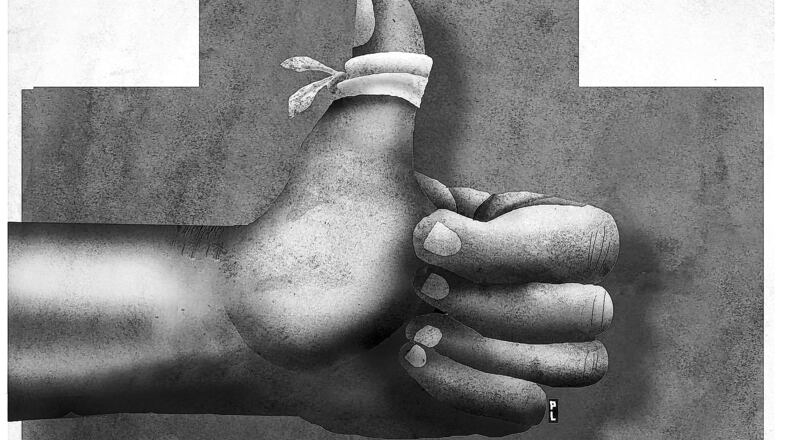The COVID-19 pandemic took the field of public health from a place of anonymity to one in which it became a giant political football. Now, with nearly 50% fewer governmental public health employees than at the start of the pandemic, antiquated data infrastructure, governance threats and chronic underinvestment, America’s public health system stands at a crossroads. Fortunately, both red and blue states and cities across the country are offering some unexpected bright spots in an otherwise bleak public health forecast.
Too often there is confusion over what public health agencies and workers actually do to protect America’s health. Put simply, public health helps to prevent illness and keep our communities healthy and thriving. Public health ensures our air and water are clean, our roads are safe, our schools, businesses and restaurants are hygienic. It also keeps harmful substances and infectious diseases at bay.
Credit: contributed
Credit: contributed
Public health enables us to be physically active, eat nutritious food and minimize substance misuse. Everyone wants their community to be vibrant and healthy. This is exactly what frontline public health professionals strive to do every day. Their commitment and dedication are critical to our nation’s safety, security and economic prosperity.
Credit: contributed
Credit: contributed
Two years ago, our organizations launched Public Health Forward, a coalition of national public health associations and philanthropies. This collaborative effort called for a 5-year vision for governmental public health in the U.S. and a plan for state and local elected and health officials to actualize this vision. The resulting blueprint benefited from the involvement of a bipartisan group of elected officials along with health care, public health, business, faith-based and community leaders.
Over the past few years, efforts to reframe and bolster public health have gained steam across the U.S. For example, Indiana created a Governor’s Public Health Commission to examine the strengths and weaknesses of its public health system. The Commission’s recommendations were championed by Gov. Eric Holcomb and the legislature ultimately boosted public health funding by 1,500 percent. Maryland Gov. Wes Moore recently signed a law to create a similar Commission on Public Health to improve public health services within his state. And stakeholders in Wisconsin created WI Public Health Forward, an initiative mirroring our national effort, with a goal of strengthening health departments across the state. These states — both red and blue — are prioritizing their students, their businesses, their communities and their economies by prioritizing public health.
We’ve also seen local public health policies supported in cities nationwide. For example, New Orleans is championing smoke-free indoor air, safer alcohol sales and street design that creates viable, livable communities prioritizing safety for pedestrians, bicyclists, motorists and transit riders and encouraging economic development. Kansas City, Missouri, and Atlanta are implementing greenspace policies to ensure all families have access to public land, nature and their benefits. Boston is leading efforts on healthy rental housing, while Philadelphia is making progress on healthy food purchasing.
While some states are building their public health infrastructure, others are jeopardizing their futures by tearing it down. Between 2021 and the first half of 2022, state legislators enacted 191 laws addressing public health, most of which diminished the emergency authority of public health officials or preempted local use of specific public health measures. These laws threaten our capacity to respond when the next outbreak hits, so their unintended consequences need to be carefully watched.
Lastly, while state and local efforts to strengthen public health are critical, this does not replace the federal government’s essential role in providing technical assistance and funding. According to a 2019 article in the American Journal of Public Health, an estimated $4.5 billion is needed to fully support the core public health services that enable communities to be healthy. Bipartisan support to build and maintain our nation’s public health infrastructure must be a priority for Congress moving forward.
In the near term, the federal government, through the Centers for Disease Control and Prevention, is supporting states and localities with a new, multibillion-dollar, 5-year Public Health Infrastructure Grant. Its goals are to bolster the workforce, modernize data systems and strengthen organizational systems and processes. Public health officials can make the case for sustained future resources with policymakers by highlighting the health, economic, and societal benefits of this grant and forming alliances with influential partners like the business community and faith-based organizations.
Effective state and local leadership is crucial to build the cross-sector partnerships necessary to strengthen public trust and support for the public health sector. Public health isn’t a red or blue issue; it’s one that should be personal to all of us given its vital importance to our national well-being.
Let’s hope this can be a unifying message for all policymakers at all levels of government.
Anand K. Parekh, M.D., is a board-certified internal medicine physician, chief medical advisor at the Bipartisan Policy Center and former deputy assistant secretary of health at the U.S. Department of Health and Human Services. Brian C. Castrucci, DPH, is an epidemiologist, public health practitioner and president and CEO of the de Beaumont Foundation, which focuses on public health.
About the Author





